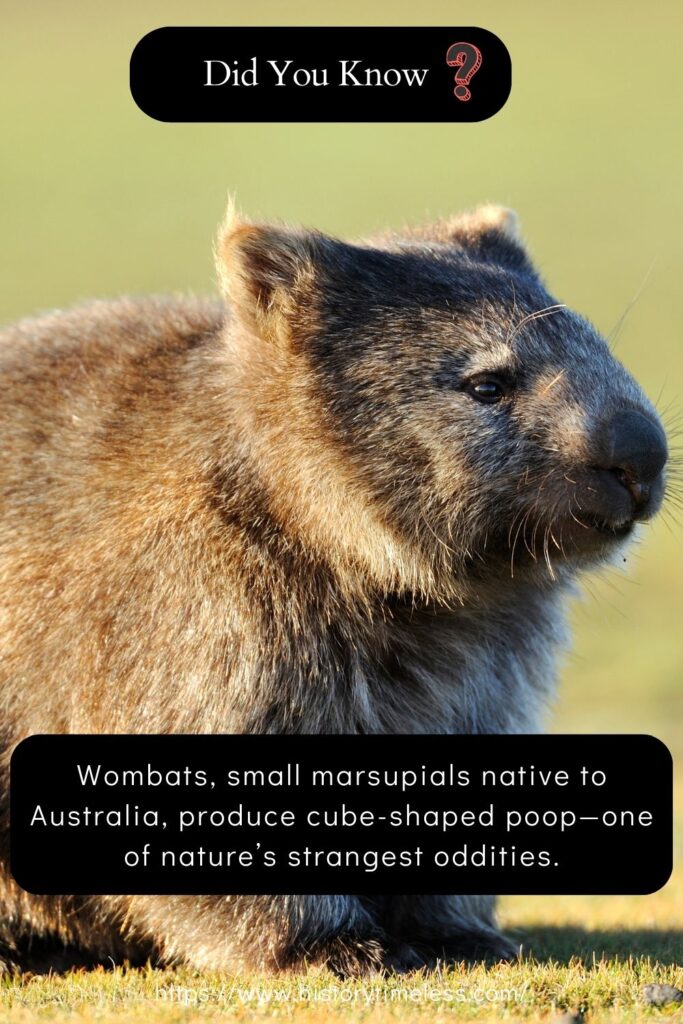The world is full of surprises, and even the most ordinary things have hidden stories waiting to be uncovered.
From nature’s mind-blowing adaptations to everyday habits with unexpected effects, there’s always something new to learn. In this article, we’ll explore ten fascinating facts that will make you see the world a little differently.
Whether you love science, history, or quirky trivia, these facts will leave you amazed and ready to share them with others!
1. Bananas Are Berries, But Strawberries Aren’t
Botanically speaking, a berry is a fruit that develops from a single flower’s ovary and has seeds on the inside. By this definition, bananas, kiwis, and even eggplants are classified as berries.
Meanwhile, strawberries, raspberries, and blackberries don’t meet these criteria since their seeds are on the outside. This strange classification is one of the many ways science challenges our everyday assumptions about food!
2. Wombat Poop Is Cube-Shaped
Wombats, small marsupials native to Australia, produce cube-shaped poop—one of nature’s strangest oddities. Scientists believe this unique shape helps the poop stay in place, preventing it from rolling away.

Wombats use their feces to mark their territory, and the cubes help keep the markings visible for longer periods.
The elasticity of their intestines plays a key role in shaping the poop, making it one of the weirdest yet fascinating adaptations in the animal kingdom.
3. Your Stomach Gets a New Lining Every Few Days
The stomach is a harsh environment filled with strong acids that break down food. To prevent itself from digesting its own tissue, the stomach continuously regenerates its lining every three to four days.
This rapid turnover helps protect it from ulcers and damage caused by digestive acids. Without this constant renewal, our stomachs would wear out quickly, making digestion impossible!
4. A Day on Venus Is Longer Than a Year
Venus has an extremely slow rotation, taking about 243 Earth days to complete a single spin on its axis. However, it only takes about 225 Earth days to complete an orbit around the Sun.
This means a year on Venus is actually shorter than a day! If you were standing on Venus (assuming you could survive its extreme atmosphere), you’d experience a bizarre sky where the Sun takes months to rise and set.
5. The Eiffel Tower Grows Taller in Summer
The Eiffel Tower is made of iron, which expands when heated. During hot summer months, the metal can expand by up to 6 inches (15 cm), making the tower slightly taller.
When temperatures drop in winter, the tower shrinks back to its original height. This natural expansion and contraction happen due to thermal expansion, a phenomenon that affects many metal structures around the world.
6. There’s a Lake That Boils People Alive
Dominica’s Boiling Lake, located in a volcanic area, maintains a temperature between 180°F and 197°F (82°C–92°C). It’s constantly steaming due to the geothermal activity beneath it.
Falling into this lake would be fatal, as the scalding water and surrounding toxic gases make it one of the most dangerous bodies of water on Earth. Scientists still aren’t sure exactly how deep it is, as extreme conditions make it difficult to explore.
7. Octopuses Have Three Hearts and Blue Blood
Unlike most animals, octopuses have three hearts—two pump blood to the gills, while the third pumps it to the rest of the body.
Their blood is blue due to hemocyanin, a copper-based molecule that helps them transport oxygen efficiently in cold, low-oxygen environments.
Even more fascinating, when an octopus swims, it temporarily stops using one of its hearts, which is why they prefer crawling to conserve energy.
8. A Cloud Can Weigh Over a Million Pounds
Despite looking light and fluffy, clouds are incredibly heavy. A typical cumulus cloud can weigh over a million pounds because it contains countless tiny water droplets.
However, these droplets are so spread out that gravity has little effect, allowing the cloud to float. This surprising fact shows how something that appears weightless in the sky is actually carrying an enormous amount of water.
9. The Sahara Desert Used to Be a Lush, Green Paradise
About 6,000–7,000 years ago, the Sahara Desert was a thriving region filled with rivers, grasslands, and diverse wildlife.
This period, known as the African Humid Period, was caused by shifts in the Earth’s tilt and orbit, which influenced monsoon patterns.
Evidence of ancient lakes, fossils of aquatic creatures, and cave paintings of lush landscapes confirm that the world’s largest desert was once a green paradise. Scientists predict the Sahara could become green again in the distant future due to natural climate cycles.
10. Your Bones Are Stronger Than Steel
Ounce for ounce, human bones are stronger than steel. A cubic inch of bone can withstand roughly 19,000 pounds (8,600 kg) of force, making it incredibly durable.

This strength comes from the combination of collagen, which provides flexibility, and minerals like calcium, which add rigidity.
Despite their strength, bones are also lightweight, allowing for movement and support without excessive weight. This remarkable balance of strength and flexibility makes our skeletons one of nature’s greatest engineering marvels.
Discover additional mesmerizing insights:
25 Epic Facts That Will Leave You Stunned!
25 Some Amazing Facts You Won’t Believe Are True!
15+ Thrilling Facts About People Born in December
28 Adorable & Crazy Facts About Bunny You Won’t Believe!
28 Shocking Facts About Bears You’ve Never Heard Before!





